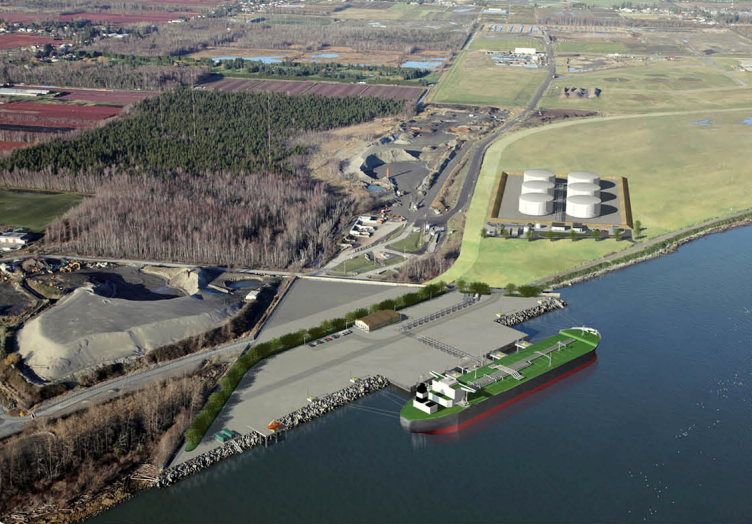The consortium of airlines planning to build an approved jet fuel terminal on the shores of the Fraser River is refuting claims by members of Richmond city council that a proposed amendment to increase the size of a pipeline from the terminal to Vancouver International Airport is intended to sell cheap, offshore product to regional airports.
Vancouver Airport Fuel Facilities Corporation is “not in any way involved with the procurement or selling of jet fuel,” stated VAFFC project director Adrian Pollard, via email through a public relations firm.
“The airlines procure their fuel on an individual basis directly from fuel suppliers and have it delivered to the VAFFC common infrastructure. This project will not change that fact. Our project is certified to handle jet fuel only, and only to serve Vancouver International Airport,” said Pollard.
On Monday, council voted 8-1 to call on the provincial and federal governments to conduct a new, and more comprehensive, environmental assessment of the jet fuel terminal, storage facility and pipeline.
In December 2013 VAFFC had received approval from the B.C. Environmental Assessment Office, to store up to 107 million litres of jet fuel on industrial-zoned land, about one kilometre away from Riverport Entertainment Complex and a condominium complex.
Now, VAFFC wants to increase the diameter of the pipeline by about 10 per cent, which amounts to about a 20 per cent increase in volume.
On Monday, Coun. Harold Steves said it seemed logical that VAFFC would want a bigger pipeline if it can get bigger, deep-draft ships to the marine terminal with the George Massey Tunnel gone.
“It’s conjecture at this time as to what exactly they are doing because they’re not telling us,” said Steves.
Pollard said Steves’ assertions were unfounded, citing other benefits of a bigger pipeline.
“We are proposing to increase the size of the pipeline to 355.6 mm (outside diameter) from 323.8 mm, to improve the efficiency of the pipeline and the pumping systems, and reduce the capital and operating costs by reducing pump sizes. The pipeline will still only deliver the fuel needed at the airport on a routine basis, regardless of how big the pipeline is. It will do it more quietly and at a lower pressure through a larger pipeline,” said Pollard.
Richmond’s engineering department noted the facility will potentially triple fuel storage capacity for YVR. Therefore, the potential for more jet fuel to flow from the terminal/storage tanks and through the pipeline “would create a facility capable of delivering product far in excess of YVR’s current demand,” noted a staff report to council.
Presently, VAFFC plans to build six storage tanks capable of storing 80 million litres of fuel. Two more tanks could be built, but Pollard said there are no immediate plans to build them.
All of council, except for Coun. Alexa Loo, has taken issue with the provincial environmental assessment, which saw the federal Department of Fisheries and Oceans and Environment Canada take a relatively limited, advisory role to the Port of Vancouver in assessing the environmental impact of the facility. The project has been approved with 64 conditions.
The facility is being designed to accommodate a standard Panamax-class vessel, which can “vary slightly in size but (ships) are generally a maximum of 294 metres long and 32 metres wide,” said Pollard.
While largely opposing the project, no one on council has questioned the environmental impact of YVR’s year-over-year growth.
CEOs of WestJet and Air Canada have declined comment to the Richmond News.



